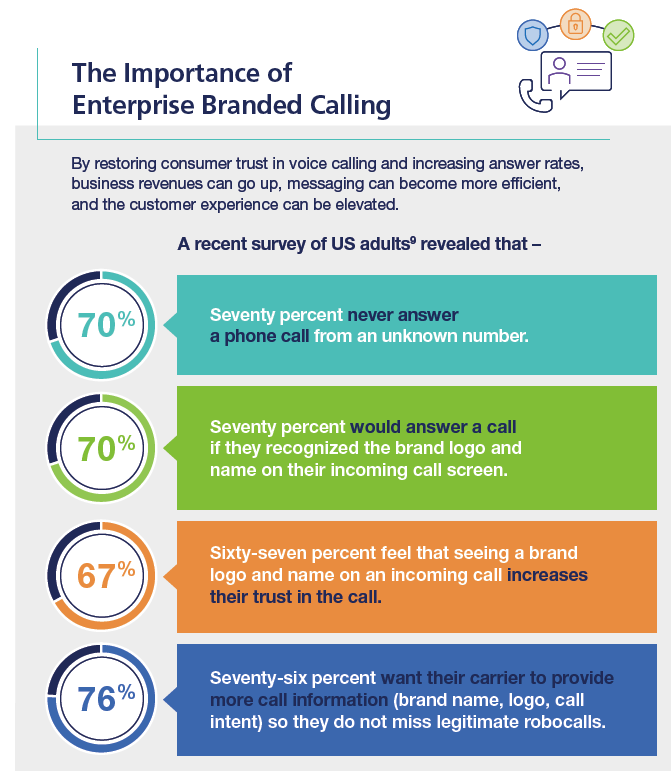


 Adobe Stock
Adobe Stock
In my prior column, we discussed the impact of eroding consumer trust in voice calling on retailers' ability to engage and connect with customers. When three-fourths of Americans refuse to answer calls from unknown numbers, and grow increasingly wary of suspicious robotexts, brands can lose a critical mechanism to deliver a superior user experience and operate efficiently.
The pain point is particularly acute for retailers with heavy delivery operations. Food delivery services, for example, represent a category often at the front edge of embracing emerging technologies to optimize the customer experience and driver efficiency, but one that also still relies heavily on tried-and-true voice and text — channels that have been undermined by a crushing volume of robocalls and robotexts the past several years.
 As fewer consumers answer the phone or respond to texts, retail brands with delivery operations face several challenges that must be addressed to succeed in their crowded, hyper-competitive markets.
As fewer consumers answer the phone or respond to texts, retail brands with delivery operations face several challenges that must be addressed to succeed in their crowded, hyper-competitive markets.
The global online food delivery market is expected to jump from $167 billion last year to more than $432 billion in 2030. With millions of deliveries happening daily, the need for real-time engagement via voice for directions, status updates, reminders, and customer service is imperative, not just for one successful delivery but to maximize the number of deliveries that drivers can complete throughout their workweek. The more orders completed, the more potential revenue the organization can add to its bottom line.
Reliable communications can be half the battle. Timely communications are also needed to help avoid missed deliveries, frustrated customers and driver inefficiencies. Americans received 70 billion robocalls in 2022, and brands with expanding food delivery operations are often struggling to cut through all of this when trying to call customers with time sensitive and important information.
Supply chains are starting to recover from the depths of the pandemic, when labor and product shortages led to more than 20% of packages arriving later than promised. But delayed or incomplete deliveries remain a significant frustration for consumers, one that can have reverberating effects on brand perception and operations.
Brands know full well the vicious cycle when a food order arrives, late, incomplete or not at all. Consumers try to reach the brand via phone, text, email or web customer support. If that doesn't work, they often head to social media to complain and tie up those corporate resources. Some may make a beeline straight for retailers' customer support lines – which can lead to overwhelming call center agents and longer wait times.
Some retailers now offer a callback or 'virtual holding' service that keeps a customers' place in line without having to be physically on the phone for extended periods. This automated callback service is a perfect example of the legitimate calls that consumers want to receive but are often missed or ignored due to the distrust that stems from unknown numbers. It also recognizes the value of agents' time and customers' time but is far from a silver bullet for delivery operations where customers will likely value immediacy of engagement over the time efficiency of the interaction.
Earlier this year, DoorDash launched its new "Package Pickup" service after a multi-month pilot whereby customers can arrange to have their UPS, FedEx and USPS packages picked up and delivered to appropriate locations. The service is initially focused on package returns; a tedious process and high volume need as consumers were expected to return more than $816 billion worth of retail merchandise purchased last year, according to a National Retail Federation report.
Pushing into new service categories introduces new customer expectations. If your $10 burrito doesn't show up on time or the order is incorrect, it may be a minor inconvenience. If a FedEx package doesn't arrive at a desired destination, or if a delivery service is trying to communicate with the customer regarding the package delivery, it can have more serious ramifications.
At the same time, it stands to reason that package delivery will prove to be a more 'high touch' customer experience service. If you live in a single-family home and request a package pick up, the process is more straightforward and theft risks often reduced. If you live in a multi-family residential building, there may be more communication required between driver and customer. Forty-nine million Americans had a package stolen over the past 12 months, so reducing the risk window of time when an item might be stolen necessitates timely customer engagement.
After years of equipping consumers with tools and technologies to block unwanted calls, many legitimate food delivery brands are working to restore trust in voice calling. Namely, important and time sensitive calls being ignored or filtered. Delivery-centric retailer brands, such as food delivery services, must explore a more holistic voice channel approach that prioritizes improving customer call answer and engagement rates.
Branded calling is an important piece of this holistic approach. It allows food delivery services to leverage mobile networks to provide important information on an incoming call screen in a way that improves the user experience through better interaction and engagement. Seventy-eight percent of consumers are more willing to answer the phone if the caller ID displays the logo and name of a brand they recognize. So that information matters and weaving branded communications into voice and text engagement is key to enhancing the delivery customer experience challenge.
In this role, Jim leads TNS’ enterprise product management activities, working closely with the wider product team and colleagues in sales, marketing and operations, among others. He is responsible for the product management of TNS Telephone Number Reputation Monitoring and TNS Enterprise Branded Calling solutions
Sign up now for the Retail Customer Experience newsletter and get the top stories delivered straight to your inbox.
Privacy PolicySeptember 9-11, 2024 | Charlotte, NC